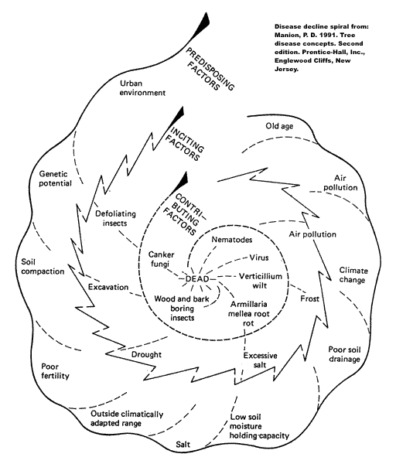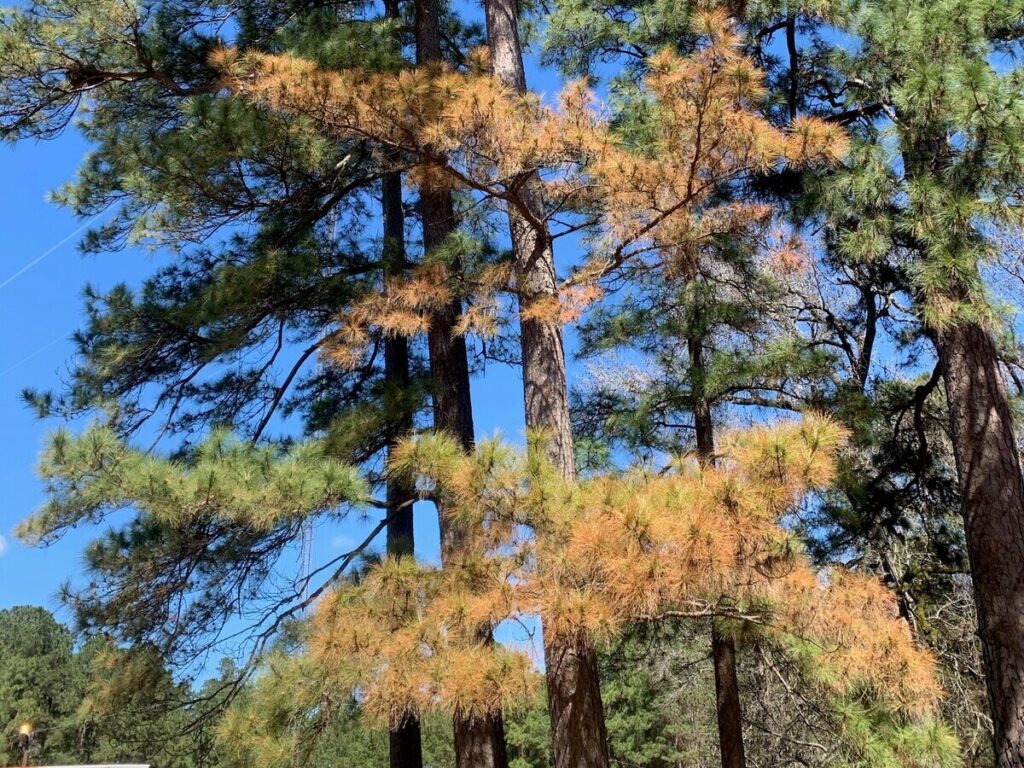Tree decline is when trees gradually lose vigor and display pale green or yellow color leaves, small leaves, poor growth, early leaf drop, early fall color, or dieback of twigs and branches. These symptoms observed above ground usually indicate problems in the root system.
Stress factors

Some decline is caused by specific diseases and environmental stressors. Often though, trees see decline from many events building up over time. Over the years, trees may be subject to insect attack, disease, adverse weather conditions, and other environmental factors which cause stress.
Common examples of environmental stress are soil compaction, changes in drainage, soil fill over the root system, mechanical damage to roots from construction, and excess salt accumulation. These stress factors alone, or collectively, reduce growth and may cause dieback.
Sidewalks, roadways, and building foundations may also restrict root growth and subject the tree to further stress. Shade and ornamental trees and shrubs are especially vulnerable to “people pressure” problems and other adverse environmental conditions because they are often planted in locations unfavorable for optimum growth.
As these primary stressors take effect on trees, “secondary” stressors like pests and diseases are more likely to attack. Tress weakened by drought, for example, are much more susceptible to attack by canker-causing fungi and borer-type insects than healthy, vigorous ones.
Preventing tree decline
Once symptoms of tree decline begin, it is difficult to stop or reverse the progression.
Prevention is key to control, and there are three important steps to follow:
Plant the right tree, in the right place
A common mistake is selecting trees that will grow too large for where they are planted, such as between the sidewalk and street or next to a building.
Many tree species also have very specific site requirements and can grow poorly in certain locations. Common examples include planting pin oak in alkaline soils (pH 7.0+) or Afghanistan pine in poorly drained soils. In both cases, trees eventually show typical symptoms of decline. This can easily be avoided by learning how to plant a tree.
Maintain tree health
The single most important step in maintaining good vigor in trees is to supply adequate water. With normal rainfall and a favorable site, adapted trees and shrubs require only occasional additional watering. However, during periods of drought or on dry sites, regular watering is important.
Avoid changes in the growing site
Any change in the site conditions may cause tree decline. A delicate balance exists between the plant root system and its soil environment.
Damage to roots from trenching or construction, change in grade by filling over or cutting away the root zone soil, a change in drainage, or other site changes, often result in root damage and tree decline. As indicated, such decline is usually irreversible, so prevention is the key to control.
